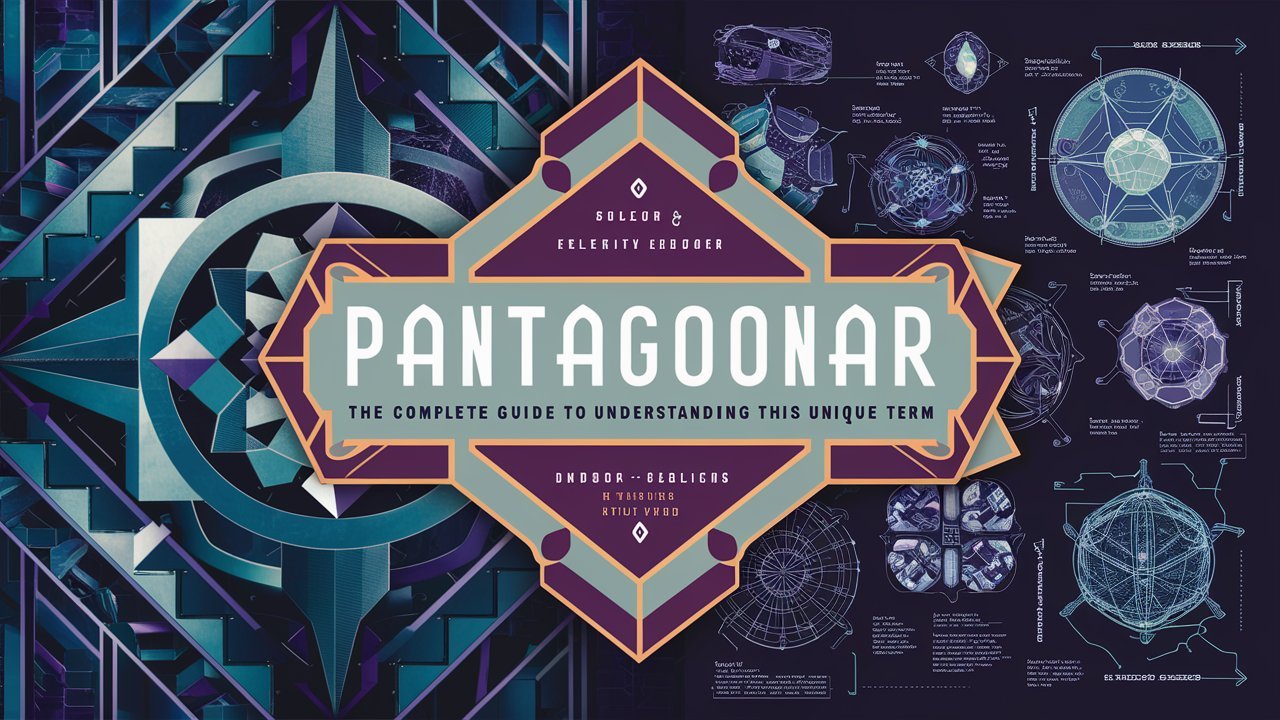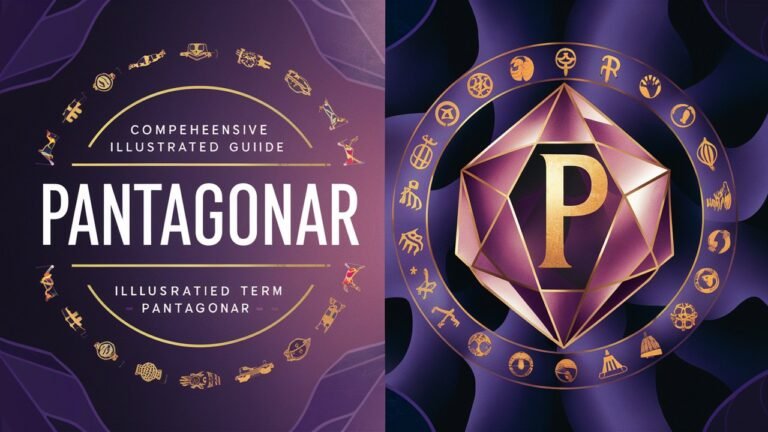The word Pantagonar has been gaining attention across various fields, from cultural references to symbolic interpretations. While many have encountered the term, few truly understand its depth, meaning, and the different contexts in which it appears. In this article, we provide a comprehensive, in-depth exploration of Pantagonar, its significance, origins, and its applications.
What is Pantagonar?
Pantagonar is a word that has intrigued researchers, writers, and enthusiasts alike. While not commonly found in everyday vocabulary, it carries strong symbolic and conceptual weight. Its meaning has been adapted across different domains, from mythology and literature to modern symbolic usage. At its core, Pantagonar represents a fusion of mystery, strength, and cultural symbolism, making it a subject of fascination.
Origins and Historical Significance of Pantagonar
The origins of Pantagonar are often linked to mythological roots and linguistic evolution. Some theories suggest that the term stems from ancient languages, representing power, wisdom, or a mythical entity. In folklore, Pantagonar has occasionally been associated with guardianship, protection, and hidden strength, similar to how legendary beings are revered in stories passed down through generations.
Over time, writers and scholars have adopted Pantagonar to symbolize mystery, authority, and endurance, often incorporating it into narratives where strength and perseverance are central themes.
Pantagonar in Mythology and Folklore
In mythology, Pantagonar often symbolizes guardianship. Across several interpretations, it has been described as a protector figure, standing as a symbol of resilience and security. Ancient storytellers used Pantagonar as a metaphor for overcoming adversity, representing the triumph of willpower and wisdom over chaos.
The word has also been connected to cosmic symbolism, where Pantagonar is seen as a force that balances order and disorder. This interpretation has led to its adoption in modern fantasy literature, where characters or realms named Pantagonar embody strength, mystery, and authority.
Symbolic Meaning of Pantagonar
The symbolic depth of Pantagonar cannot be overstated. It carries meanings that extend beyond its literal use.
-
Strength and Power – Pantagonar is often used to represent the embodiment of strength, both physical and spiritual.
-
Protection and Guardianship – Its mythological associations place it as a shield against external harm.
-
Mystery and Knowledge – Pantagonar is also linked with wisdom, particularly hidden or esoteric knowledge that is not easily accessible.
-
Balance and Unity – Many interpretations suggest Pantagonar is about harmony, bridging dualities such as light and darkness or chaos and order.
Pantagonar in Literature and Culture
Writers, poets, and storytellers frequently draw on Pantagonar as a central motif in their work. In fantasy and science fiction, Pantagonar might appear as a mystical entity, a realm, or an artifact imbued with special power. Cultural references often highlight Pantagonar as a symbol of hidden strength, making it a compelling literary tool.
Beyond literature, Pantagonar has influenced art, music, and cultural symbolism, where it is used to represent transformation, resilience, and inner strength. Artists and musicians often adopt Pantagonar in titles or themes to convey an aura of mystery and authority.

Pantagonar in Modern Symbolism
In contemporary settings, Pantagonar has transcended myth and literature to become a symbol in personal development, spirituality, and branding.
-
Personal Development – Motivational speakers and coaches sometimes use Pantagonar as a metaphor for tapping into one’s hidden potential and unlocking inner strength.
-
Spirituality – Pantagonar symbolizes the eternal struggle for balance and enlightenment, inspiring spiritual seekers to find harmony in life.
-
Brand Identity – Companies have occasionally adopted Pantagonar in their brand names to convey strength, uniqueness, and authority.
Practical Applications of Pantagonar
While Pantagonar may sound abstract, its applications are surprisingly practical. Here are some ways the concept is used:
-
Creative Writing – Writers use Pantagonar to add depth and intrigue to their characters, worlds, or storylines.
-
Symbolism in Art – Painters and sculptors draw inspiration from Pantagonar to create works that evoke resilience and mystery.
-
Personal Growth – Individuals apply Pantagonar as a guiding principle, using it as a metaphor for self-improvement and perseverance.
-
Cultural Branding – Businesses incorporate Pantagonar to stand out with an aura of strength and uniqueness.
Pantagonar as a Metaphor for Resilience
At a deeper level, Pantagonar embodies resilience. It teaches us that, just like the mythical guardian it is associated with, we too can endure challenges and emerge stronger. This metaphor resonates across personal development, leadership, and cultural identity, making Pantagonar a timeless symbol of endurance.
Pantagonar in Popular Media
From books and films to online discussions, Pantagonar continues to spark curiosity. Its use in fantasy franchises, video games, and modern novels demonstrates its adaptability and continued relevance. Fans of mythology and fantasy often find Pantagonar captivating because it blends the ancient with the modern, the mystical with the relatable.
Conclusion: Why Pantagonar Matters Today
Pantagonar is more than just a word; it is a symbol that transcends myth, culture, and modern symbolism. It represents strength, resilience, and balance, values that are universally cherished. Whether viewed as a guardian figure in folklore, a metaphor in literature, or a symbol in personal growth, Pantagonar continues to inspire curiosity and admiration.
As we explore its historical roots and modern applications, it becomes clear that Pantagonar holds a unique place in both cultural and personal contexts. Its power lies in its ability to adapt, inspire, and resonate across generations.
Frequently Asked Questions (FAQ) About Pantagonar
1. What does Pantagonar mean?
Pantagonar symbolizes strength, protection, and mystery, often used in mythology, literature, and modern symbolism.
2. Is Pantagonar a real historical figure?
No, Pantagonar is not a historical figure but rather a symbolic or mythical concept that represents resilience and guardianship.
3. How is Pantagonar used in modern times?
Pantagonar is used in literature, art, branding, spirituality, and personal development as a metaphor for strength and balance.
4. Why is Pantagonar associated with resilience?
Because its origins in mythology often portray it as a guardian figure, it has come to represent resilience, endurance, and protection.
5. Can Pantagonar inspire personal growth?
Yes, many people use Pantagonar as a guiding symbol for unlocking inner strength and pursuing balance in life.
